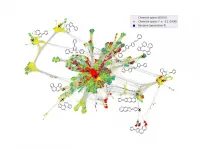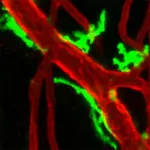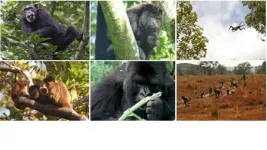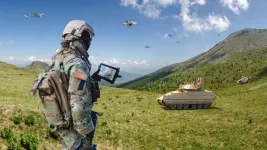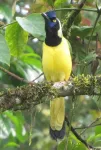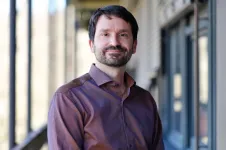INFORMATION:
Seismicity on Mars full of surprises, in first continuous year of data
2021-04-23
(Press-News.org) The SEIS seismometer package from the Mars InSight lander has collected its first continuous Martian year of data, revealing some surprises among the more than 500 marsquakes detected so far.
At the Seismological Society of America (SSA)'s 2021 Annual Meeting, Savas Ceylan of ETH Zürich discussed some of the findings from The Marsquake Service, the part of the InSight ground team that detects marsquakes and curates the planet's seismicity catalog.
Marsquakes differ from earthquakes in a number of ways, Ceylan explained. To begin with, they are much smaller than earthquakes, with the largest event recorded at teleseismic distances around magnitude 3.6. SEIS is able to detect these small events because the background seismic noise on Mars can be much lower than on Earth, without the constant tremor produced by ocean waves.
"For much of a Martian year, from around sunset until early hours, the Martian atmosphere becomes very quiet, so there is no local noise either," he said. "Additionally, our sensors are optimized and shielded for operating under severe Martian conditions, such as extremely low temperatures and the extreme diurnal temperature fluctuations on the red planet."
Marsquakes also come in two distinct varieties: low-frequency events with seismic waves propagating at various depths in the planet's mantle, and high-frequency events with waves that appear to propagate through the crust. "In terms of how the seismic energy decays over time, the low-frequency events appear to be more like earthquakes" in which the shaking dies away relatively quickly, Ceylan said, "while the high-frequency events are resembling moonquakes" in persisting for longer periods.
The vast majority of the events are high-frequency and occur at hundreds of kilometers of distance from the lander. "It is not quite clear to us how these events could be confined to only high frequency energy while they occur at such large distances," he said. "On top of that, the frequency of those events seems to vary over the Martian year, which is a pattern that we do not know at all from Earth."
Only a handful of marsquakes have clear seismic phase arrivals--the order in which the different types of seismic waves arrive at a location--which allows researchers to calculate the direction and distance the waves come from. All these marsquakes originate from a sunken area of the surface called Cerberus Fossae, about 1800 kilometers away from the InSight Lander.
Cerberus Fossae is one of the youngest geological structures on Mars, and may have formed from extensional faulting or subsidence due to dike emplacement. Recent studies suggest extension mechanism may be the source of the Cerberus Fossae quakes, Ceylan noted, "however, we have a long way in front of us to be able to explain the main tectonic mechanisms behind these quakes."
The biggest challenge for The Marsquake Service and InSight science team has been "adapting to unexpected signals in the data from a new planet," Ceylan said.
Although there were significant efforts to shield SEIS from non-seismic noise by covering it and placing it directly on the Martian surface, its data are still contaminated by weather and lander noise.
"We needed to understand the noise on Mars from scratch, discover how our seismometers behave, how the atmosphere of Mars affects seismic recordings, and find alternative methods to interpret the data properly," said Ceylan.
It took the Service a while to be "confident in identifying the different event types," he added, "discriminating these weak signals from the rich and varied background noise, and being able to characterize these novel signals in a systematic manner to provide a self-consistent catalog."
The InSight seismicity catalog and data are released to the public via IPG Paris, IRIS, and PDS on a three month schedule, with three month data delay.
ELSE PRESS RELEASES FROM THIS DATE:
Toward new solar cells with active learning
2021-04-23
How can I prepare myself for something I do not yet know? Scientists from the Fritz Haber Institute in Berlin and from the Technical University of Munich have addressed this almost philosophical question in the context of machine learning. Learning is no more than drawing on prior experience. In order to deal with a new situation, one needs to have dealt with roughly similar situations before. In machine learning, this correspondingly means that a learning algorithm needs to have been exposed to roughly similar data. But what can we do if there is a nearly infinite amount of possibilities so that it is simply impossible to generate data ...
Newly discovered immune cell function vital to healing
2021-04-23
Cardiovascular disease, the most common cause of death, is the result of oxygen deprivation as blood perfusion to affected tissue is prevented. To halt the development of the disease and to promote healing, re-establishment of blood flow is crucial. Researchers at Uppsala University have now discovered that one of the most common immune cells in the human body, macrophages, play an important role in re-establishing and controlling blood flow, something that can be used to develop new drugs.
The classic function of immune cells is to defend the body against attacks from microorganisms and tumour cells. Macrophages are immune cells specialised in killing and consuming microorganisms but they have ...
Travel paths of primates show how their minds work
2021-04-23
How primates get from A to B gives vital information about their cognitive evolution, say researchers in a new study looking at the travel paths of animals in the wild. Using data from 164 wild primate populations, the global survey examines the mental abilities that primates, including ourselves, use to know where and when to travel in the most efficient way.
A birds eye view
Co-author Miguel de Guinea, expert in Evolutionary Anthropology at Oxford Brookes University commented: "Imagine looking down on a huge outdoor market from high in the sky, perhaps from a drone hovering quietly above. The people below move in different ways. Some wander haphazardly among the stalls: they are learning what's available but are clearly not busy. Others take bee-line routes ...
Hubble captures giant star on the edge of destruction
2021-04-23
In celebration of the 31st anniversary of the launching of NASA's Hubble Space Telescope, astronomers aimed the renowned observatory at a brilliant "celebrity star," one of the brightest stars seen in our galaxy, surrounded by a glowing halo of gas and dust.
The price for the monster star's opulence is "living on the edge." The star, called AG Carinae, is waging a tug-of-war between gravity and radiation to avoid self-destruction.
The expanding shell of gas and dust that surrounds the star is about five light-years wide, which equals the distance from here to the nearest star beyond the Sun, Proxima Centauri.
The huge ...
New data could inform youth-focused pandemic messaging
2021-04-23
Now that teens and young adults across the country account for an increasing share of COVID-19 cases, and many have become eligible for vaccination, several recently published studies based on polls of this age group provide insights into the kinds of messaging that might work best for both preventing transmission and vaccine uptake.
Using data from text-message polls of people between the ages of 14 and 24 taken at several points in 2020, researchers from the University of Michigan find a clear theme: that most young people are taking COVID-19 seriously and trying to follow public health guidance, and that many of them they are motivated by the desire to protect ...
Army, ASU publish human-autonomy communication tips
2021-04-23
ABERDEEN PROVING GROUND, Md. -- Army and Arizona State University researchers identified a set of approaches to help scientists assess how well autonomous systems and humans communicate.
These approaches build on transformational scientific research efforts led by the Army's Robotics Collaborative Technology Alliance, which evolved the state of robots from tools to teammates and laid the foundation for much of the service's existing research into how humans and robots can work together effectively.
As ideas for autonomous systems evolve, and the possibilities ...
Critical understanding of why and how solid-state batteries
2021-04-23
Researchers from the Faraday Institution's SOLBAT project have made a significant step in understanding how and why solid-state batteries (SSBs) fail. A paper, published in Nature Materials on 22 April, provides answers to one important piece of the scientific puzzle.
To make step changes in electric vehicle (EV) battery range and safety at a lower cost, new battery chemistries that are "beyond lithium ion" must be developed. SSBs are one such promising technology, but mass market adoption has been held back by several key technical challenges that cause the battery to fail when charged and discharged.
SSBs can short circuit after repeating charging and discharging. One well-recognised cause of battery failure is the growth of dendrites, branching networks of lithium that ...
First description of a new octopus species without using a scalpel
2021-04-23
An evolutionary biologist from the University of Bonn brought a new octopus species to light from depths of more than 4,000 meters in the North Pacific Ocean. The sensational discovery made waves in the media a few years ago. Researchers in Bonn have now published the species description and named the animal "Emperor dumbo" (Grimpoteuthis imperator). Just as unusual as the organism is the researchers' approach: in order to describe the new species, they did not dissect the rare creature, but instead used non-destructive imaging techniques. The results have now been published in the prestigious journal BMC Biology.
In the summer of 2016, Dr. Alexander ...
Climate change impacts conservation sites across the Americas
2021-04-23
A continental-scale network of conservation sites is likely to remain effective under future climate change scenarios, despite a predicted shift in key species distributions.
New research, led by Durham University and published in the journal Frontiers in Ecology and Evolution, investigates the impacts of potential climate change scenarios on the network of Important Bird and Biodiversity Areas (IBAs) across the Caribbean, and Central and South America.
The research was carried out in collaboration with Senckenberg Biodiversity and Climate Research Centre, BirdLife International and the National Audubon Society.
IBAs are sites identified as being internationally important for the conservation of bird populations, with over 13,000 ...
Researchers uncover activation mechanism of a cell growth protein that can trigger cancer
2021-04-23
There are many different types of cancer, but they all have one thing in common: errors in the signals that control normal cell behaviour can cause uncontrolled cell growth and cell division, leading to a tumour. An enzyme called SHP2 plays a key role in this regard. SHP2 is a signalling molecule that in its activated state stimulates cell proliferation. In a normal healthy body, the rates of cell proliferation and cell death are balanced and tumours do not develop. However, if SHP2 becomes too active, the number of cells being created outweighs the number that die, which can lead to the formation of dangerous tumours. Enhanced SHP2 activity resulting from genetic ...
